- Bernard Preston homepage
- Broad beans
- Broad Bean Tips
Broad bean tips
Broad bean tips will contribute greatly to those suffering from Parkinson's disease; it is all about the dopamine.
Anyone reading this column with any regularity will know that I have a love affair going with broad beans. I would be astonished if you have ever seen them in the supermarket; in fact, very surprised if you have eaten them before.
Why do I love them so much? Firstly because they are very high in vegetable protein; that means we can eat much less red meat if we choose. It is the only legume that has all the essential amino acids.
And secondly since they are the only source of pharmaceutical amounts of the precursor of dopamine, the “feel good” hormone. Without it we develop a very serious and not uncommon condition known as Parkinson’s disease.
You may find broad beans at one of the farmers’ markets, such as Reko Hilton. A lady called Chisomo sells them occasionally. Otherwise you must grow them yourself. Picked young and enjoyed the same day they are wonderful. Old and starchy they are perfectly awful.
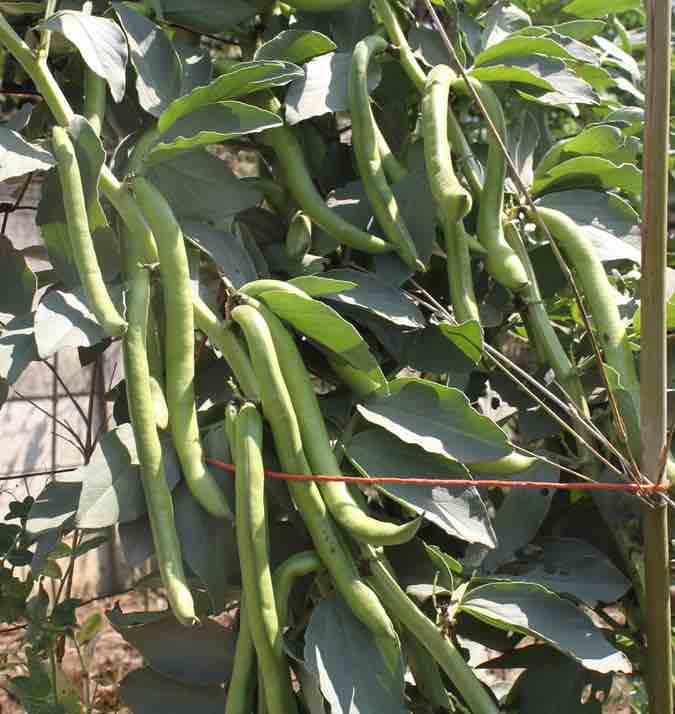
Broad beans, also known as favas in many parts of the world, are not difficult to grow; but they are tedious. Having planted them for five years I now realise there are good reasons why farmers do not like to sell them. You cannot get a decent return for the work needed.
Each plant must have a firm stake at least 2m long; bamboo is perfect. After a rain loosen the soil to a spade deep and force the shaft in as far as you can; it really must be steady as they can grow over two metres tall. Each frond will be very heavy in pods; they readily topple over and break.
The stakes should be placed about a metre apart; don’t plant the seeds too close together. They need plenty of light.
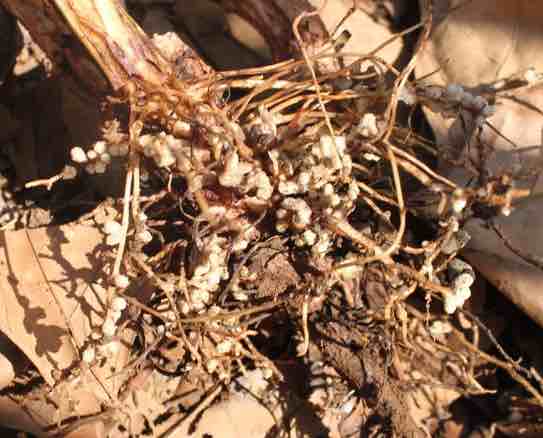
Inoculating the seed with specific rhizobia bacteria makes a huge difference. The bugs attach to the roots so the plants can harvest nitrogen from the air. This enables legumes to synthesise the amino-acids they are famous for; the building blocks of protein. They remain in the soil for up to five years.
Ordinary peas use the same rhizobia bacteria.
Ours were already 20cm high so we just watered the rhizobia around the plants; it has proved immensely successful. The crop is far greater than in previous seasons.
Place the seeds between sheets of damp newspaper in a warm, dark place for a day or two before planting. Once they start to sprout they can go into the ground; one per stake. Don’t crowd them. Mulching definitely helps keep the earth damp.
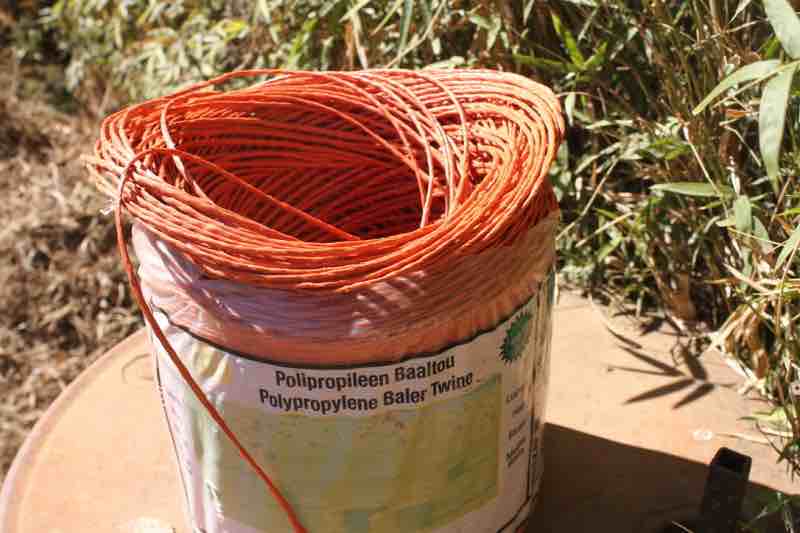
Purchase a large ball of plastic baling twine. It is expensive but will last for years. Be generous in cutting longer than expected lengths and loosely knot the growing fronds to the stake. Often one long piece over a metre can go right around the stems. Don’t be tempted to pull them in tightly with shorter bits; they really do need that extra light. You will just get a smaller crop.
I stress loosely. The plants grow incredibly fast so every few days you have to raise the supporting twine; you may need to undo the knot and retie it. The lengths can be reused many times; they will last for years.
This is not single-use plastic. I don’t like that either but it really will last and can be utilised for many other purposes; like tying up a bean trellis. Cut it with a Stanley knife rather than scissors.
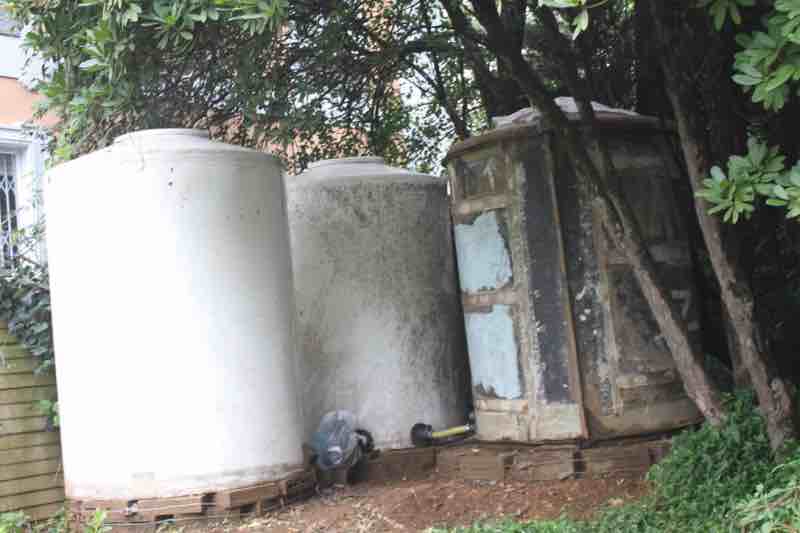
They have to be irrigated deeply and regularly through the winter. Harvest and store your summer rainfall for this purpose alone; if you have to purchase municipal water your broad beans will turn out very expensive.
Finally a profusion of beautiful black and white flowers appear. Keep a sharp look out for tiny black aphids that attack the growing tip and flowers[2]; especially if the plants become stressed from too little irrigation. Given a chance to proliferate they will destroy your whole crop.
A two litre milk bottle with a teaspoon of washing-up liquid and filled with water is the solution. Pour the mixture over the insects, gently brushing them off with your fingers. Caught early it’s a very small problem and easily dealt with.
On the subject of disease, plant in a different patch of ground every year. Broad beans are susceptible to an untreatable mould that turns the leaves and stems brown; they then die. So you can’t grow them on the same fence year in and out. Avoid picking the fruit when it is wet; irrigate around the base.
Growing favas will teach you patience; it takes an age for the flowers to produce first the young pods and then finally the mature beans.
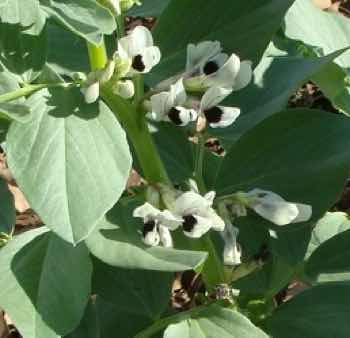
The young pods contain even more L-dopa than the seeds and can be enjoyed just like normal green beans; then you’ll “feel good.” However the mature crop has more protein but it is quite a fag getting them from the shell. We eat them both ways. When a frond has finished bearing, cut it back and new shoots will appear. You will have masses of food for months.
At the end of the season this is the harvest left for freezing from just two plants.
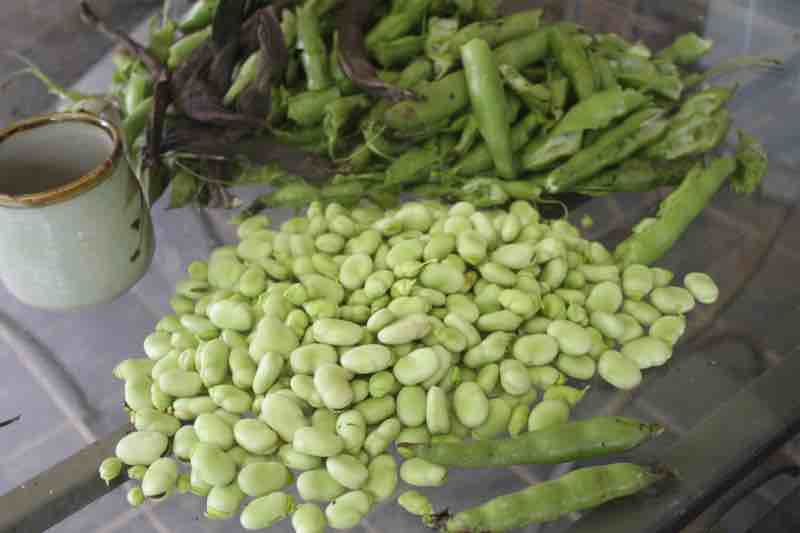
In short growing broad beans is not difficult but it is finicky and time-consuming. It is our contention that we either make the effort to enjoy good food or accept that we’ll spend a lot more hours consulting doctors and the pharmacist.
In a recent survey of 2,000 Britons it was found they “feel good” less than half the time; and 61% have accepted that aches and pains are a part of their daily life. That’s a sure sign of angry, inflamed muscles and joints. They blamed not exercising enough, a poor diet and not having enough hours in a day.
If you want to feel good 90% of the time, then grow broad beans. Getting into the garden is what is today being called forest bathing. Take a few hours to slow down and live in the present with all your senses alert; smell the roses, crush leaves of sweet basil in your hand and taste the blueberries.
“People are wasting money thinking there has to be a magic set of pills that will keep them healthy when we should all be following the evidence-based practices of eating properly and exercising.”
- Journal of the American Medical Association
Our decision was to drastically reduce screen time, to get walking and gardening; what a blessing it has been. As the Dutch trot out regularly, totally direct and un-PC people, those who will not hear must feel.
In a mild temperate climate plant favas in late summer; like peas they grow better through the winter and into spring. Set the seed in March; right now in September we are preparing regular green beans and limas for summer. Reap a mountain of vegetable protein from your own garden all year round. If you include “doctor time” they will save you from much pain and a lot of money.
Should you have a glut then freezing broad beans is one solution; enjoy them all year-round.
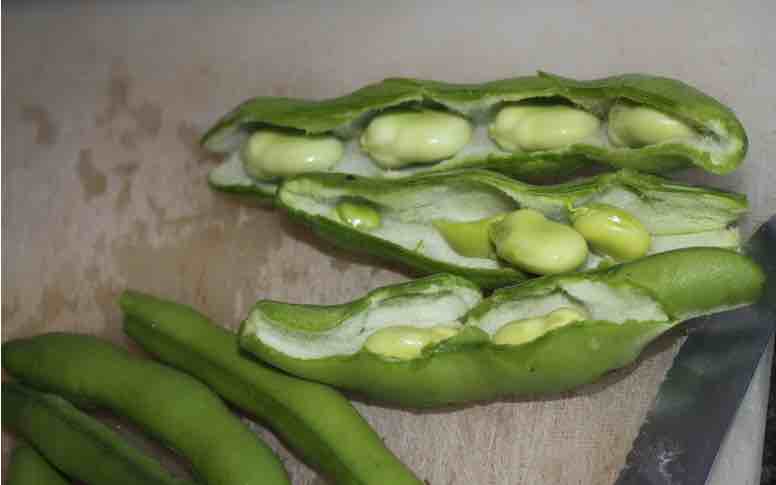
Nature is calling; is it time to heed? These broad bean tips would be a good start.
Treated poles
Bamboo lasts for only one season before it rots in the ground; it's a lot of work cutting and placing them deep in the earth. So for the first time in 2024 we are using treated wattle poles.
 Treated poles for broad beans
Treated poles for broad beansBroad bean tips
Broad bean tips are for those wanting more vegetable protein. It's called the flexitarian way of eating, enjoying meat only once or twice a week; or even less.
When browsing use right click and "Open Link in New Tab" or you may get a bad gateway signal.
Newsletter
Our newsletter is entitled "create a cyan zone" at your home, preserving both yourself and Mother Earth for future generations; and the family too, of course. We promise not to spam you with daily emails promoting various products. You may get an occasional nudge to buy one of my books.
Here are the back issues.
- Lifestyle and ideal body weight
- What are ultra-processed foods?
- Investing in long-term health
- Diseases from plastic exposure
- Intensive lifestyle management for obesity has limited value
- A world largely devoid of Parkinson's Disease
- The impact of friendly bacteria in the tum on the prevention of cancer
- There's a hole in the bucket
- Everyone is talking about weight loss drugs
- Pull the sweet tooth
- If you suffer from heartburn plant a susu
- Refined maize meal and stunting
- Should agriculture and industry get priority for water and electricity?
- Nature is calling
- Mill your own flour
- Bake your own sourdough bread
- Microplastics from our water
- Alternative types of water storage
- Wear your clothes out
- Comfort foods
- Create a bee-friendly environment
- Go to bed slightly hungry
- Keep bees
- Blue zone folk are religious
- Reduce plastic waste
- Family is important
- What can go in compost?
- Grow broad beans for longevity
- Harvest and store sunshine
- Blue zone exercise
- Harvest and store your rainwater
- Create a cyan zone at your home
Did you find this page interesting? How about forwarding it to a friendly book or food junkie? Better still, a social media tick would help.
- Bernard Preston homepage
- Broad beans
- Broad Bean Tips
Address:
56 Groenekloof Rd,
Hilton, KZN
South Africa
Website:
https://www.bernard-preston.com